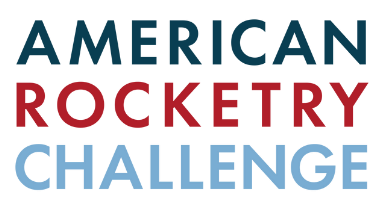In celebration of TARC’s 15th anniversary, we asked our rocketeers to pen short essays describing why they participate in the TARC program. Three finalists were selected for publication on the TARC site and one received a first place prize of $500. Ava Badii’s essay won our grand prize!
“Why I do TARC”
By: Ava Badii
(Notre Dame Academy)
Who knew there was a Hornet Hotline, a sort of “Batphone” for the US Navy’s F/A-18 fighter jet? I found myself meeting the female officer who writes software for the Hornet and actually answers the phone when pilots call. An amazing journey led up to my TARC team receiving an invitation from the Supervisor of Operations at the US Navy’s Propulsion Test Site to tour China Lake after she saw our all-girls TARC team on CBS news. This is just one of the many lasting memories and potentially life-altering moments that TARC has given me, a senior in the midst of applying to colleges, and that’s why I do TARC.
I initially came to my school’s first rocketry meeting because I was told that flames and free food would be involved. From that day on, I have enjoyed designing, building, and launching rockets, notable ones being Candycrushers, Rockets of Oz, and Star Wars: A New Hope. My rocketry season was punctuated with spreadsheets loaded with launch data, nerve-racking attempts to glue fins on straight, and the nail-biting anticipation of counting beeps of the altimeter — except this past year was sweetened with a great victory as my school’s rocketry team qualified for the 2016 TARC finals. I was about to interact with all kinds of like-minded students. Representing my state in the Rockets on the Hill reception strengthened my self-confidence and truly made me appreciate how TARC can bring young minds from different regions and backgrounds together. Meeting other teams during our trip to Washington, D.C. and Virginia, having the honor to meet leaders from Raytheon and Lockheed Martin, and winning the TARC Team Presentation Competition was the cherry on top of a groundbreaking rocketry season.

Not long after TARC Finals, SpaceX allowed my team to tour their facility in Hawthorne, California, giving me a glimpse into the future of space exploration. I learned about SpaceX’s approach to regenerative cooling and realized how crucial multiple engineering fields are to aerospace. I was not allowed to write anything down while I walked through the cavernous facility, so I cannot offer details other than my feelings: a sense of giddiness and wonder as I stared into the Falcon 9’s nine outer engines. It struck me that despite the mighty power behind the Falcon 9 compared to my comparatively minuscule TARC rocket, both had the same purpose. A Merlin engine with its liftoff thrust of 845 kilonewtons did not seem too different from my TARC rocket’s F32-6T motor, I chuckled, and thought that in my own way, I was furthering the path to Mars — one F motor at a time.
A few months later, while standing on the huge static firing bays at China Lake in sight of the propulsion laboratory, I felt like a tiny speck in the million-acre test site. Once inside the lab, a senior mechanical engineer reinforced that everything we learned in TARC — from motor impulse to creating flight simulations — was directly related to the engineers’ work there. When he razzed the electrical engineers in the room with “mechanical engineers are God’s chosen engineers,” I cracked up, and it was at that moment that I could see myself becoming an engineer. His inspiring words about failure simply being a stepping stone resonated within me — especially since my first rocket of this past TARC season irretrievably landed into the only lush tree in the entire area despite being launched in a dry lakebed during one of the worst droughts in California’s history. At China Lake, I also met test pilots and learned about combat jets like the Prowler, the Growler, the F-18, the F-22, and F-35, and was impressed by the engineering behind the missiles, such as the Sidewinder, which was developed there. After standing next to a Hornet, my jaw dropped, and it nearly fell to the floor when I was told I could touch it. However, what inspired me most was meeting women, both civilians and military, who thrived in STEM paths. As a burgeoning female engineering student, they served as role models, and I hope to be as passionate about my work as they are about theirs.
TARC has brought a world of opportunity into my small, 350-student, all-girls high school. As I complete my last college application, I find that TARC has instilled in me such a passion for rocketry and engineering principles that I am fully committed to pursuing a career in STEM. I am inspired by the innovators of aerospace that I have met. Why wouldn’t I want to do TARC?
